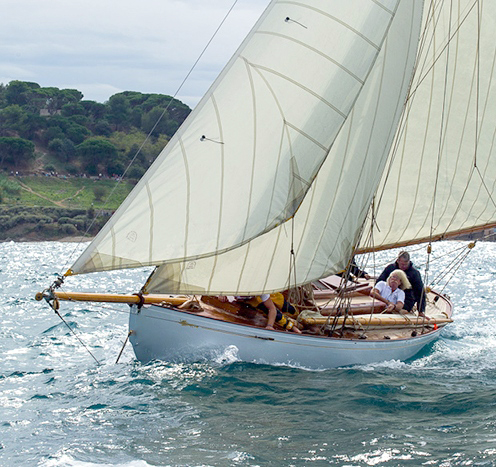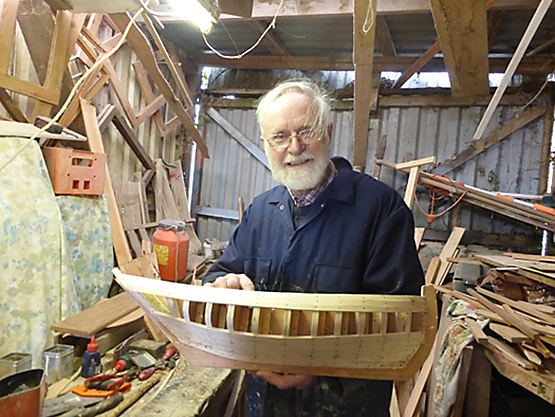Displaying items by tag: Carl Oscar Lilegren
Irish Classic Boats In Top Places In International Awards
Classic yachts and traditional boats with close Irish links figured prominently among the prize-winners at the recent International Classic Boat Awards 2016 in London writes W M Nixon.
At a ceremony which was attended by more than 120 specialists and key individuals from places as diverse as Finland, Spain, Switzerland and Italy in addition to the UK and Ireland, the rare skills and painstaking patience involved in bringing old boats back to vibrant elegance and full seagoing style were given their proper recognition.
At the top level, the quality of restoration on the international scene provided by specialist firms is usually built on team skills developed over many years by craftsmen accustomed to working closely with each other in a long-established yard. This was the case with the overall winner for the Restoration of the Year, which went to the 1910 International Ten Metre Marga, a Carl Oscar Lilegren design and originally Swedish built, which was given the full restoration treatment by Cantiera Tecnomar in Fiumicino near Rome. The Tecnomar yard is noted for its restorations, the most famous being Orianda.

Tern as she was in her second season of 1898. The sailmaker couldn’t find her proper number 7 in time to fulfill the order, so he made do with an inverted 2 instead, and that’s the way she has been restored for 2015-16. Photo courtesy RUYC
However, despite the ferocious competition, the runner-up position in the overall Restoration of the Year category went to an 1897 yacht which was brought back to life by a free-lance team assembled for the purpose. Moreover, they did the job in a large shed in Palma, Mallorca, rather than in a purpose-designed boatyard. And with all due respects to the readers of Classic Boat magazine who voted on the many nominations for this top award, the yacht which was runner-up is a much better-looking boat than the winner, as she is the beautiful William Fife-designed Belfast Lough One-Design Association Class I 37ft yacht Tern, originally built by John Hilditch in Carrickfergus with seven sisters-ships in just five months in 1896-1897.

That magic moment when you realise a total restoration has been achieved to perfection. On Tern’s first sail in her re-born form on 6th August 2015 off Palma are (left to right) researcher Patricia O’Connell, rigger Chuck Demangeat on the helm, and lead restoration yachtbuilder Paul Harvey. Photo: Alan Renwick
Her superb restoration was completed in August 2015 by a team led by Paul Harvey and including cabinet-maker and joiner Alan Renwick, boatbuilder Nico Calderoni, surveyor John Walker, and owner’s representatives Brendon Hay and Iain Cook, with Patricia O’Connell as researcher. The legendary Chuck Demangeat was in charge of the restoration of Tern’s rig, which sets classic sails specially made by Andy Cassell of Ratsey & Lapthorn in Cowes.
The same firm made Tern’s original suit in 1897, but back then it was the company’s Scottish branch loft in Gourock which did the job, and it still called itself Lapthorn & Ratsey. They were in such a hurry to get the sails away in time to Belfast that when a Number 7 could not be found in the sail loft’s numbers locker to be sewn onto Tern’s mainsail, they made do with an inverted 2, and it was under this unique symbol that Tern had six years of successful racing with her original owners, the King family of Cultra on the south shore of Belfast Lough.

She’s a beauty from any angle. The award-winning restoration of Tern has recaptured the Fife style
With her complete restoration in 2014-2015, the weird numerical symbol of 1897 has been restored too. It was prominent at the head of the under 40ft division in races at the Classic Regattas on the French Riviera in late September, with Tern winning her class in Les Voiles de St Tropez 2015.
Another area of classic yacht interpretation was also of Irish interest at the London ceremony, and this was in one of the specialist divisions, the Spirit of Tradition. It can be a tricky brief to interpret, but let’s just say that when you see a true Spirit of Tradition classic, you’ll know that you’re looking at one without having to be told.

Once upon a time, she was a standard little Elizabethan 23. But with Bill Trafford working his magic, she has become Kioni, winner of the Spirit of Tradition (under 40ft) prize at the International Classic Awards 2016.
This was certainly the case in Crookhaven in West Cork last summer when the 26ft Kioni made her appearance. Amazingly, somewhere inside this exceptionally elegant little sloop is the hull of an old glassfibre-built Elizabethan 23. She had originally been designed with a standard 1960’s retroussé counter. But Bill Trafford of North Cork transformed her counter, and fitted a teak-laid deck to die for, along with other gems of yacht-building. So not surprisingly, in London Kioni won the Spirit of Tradition award for yachts under 40ft.

Jim Horgan of Furbo in his workshop with one of his models of a Galway Hooker. Photo: W M Nixon
Last year, a Classic Award for traditional boat-building went to Jim Horgan of Galway for his clinker-built cat-rigged dinghy based on the late O’Brien Kennedy’s interpretation of the designs for the Bray Droleen. This year, Jim was back, representing the Galway Hooker Association, the Wooden Boatbuilders Trade Association, and the Conamara Heritage Centre to present Rob Peake, editor of Classic Boat, with a half model of a Galway Hooker which he’d made in his Furbo workshop. The presentation was made in appreciation for the work done by Classic Boat magazine on behalf of traditional and classic boat enthusiasts worldwide, and neatly rounded out an excellent evening for the classic and traditional yacht and boat movement.

At home in Conamara. Some of the traditional-style boats built under Jim Horgan’s tuition.





























































